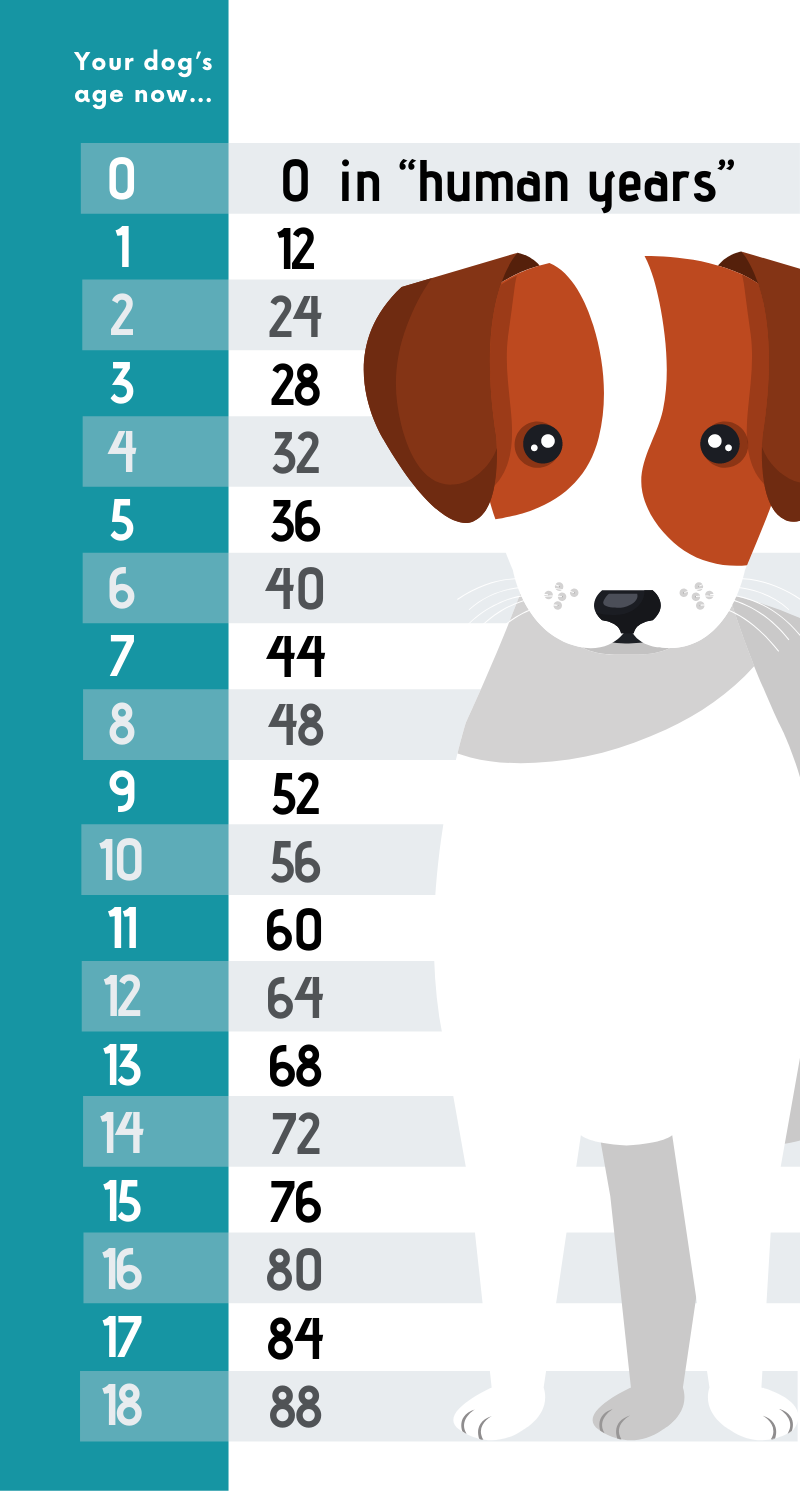
This pet health content was reviewed for accuracy by a veterinarian, Dr. Pippa Elliott, BVMS, MRCVS. It was last reviewed and updated on July 9, 2024.

Understanding the Old Method of How to Calculate Dog Years
I have always understood how to calculate dog years as 7 times human years. I can’t remember where I picked this up, but it’s stuck with me for most of my life. If you had a dog for one year, learning how to calculate dog years would mean they are 7 in dog years. Simple as that.
- Old Method on how to calculate dog years: 1 dog year = 7 human years
- Common Belief: Widely accepted and easy to remember
When you think about it, dogs and cats can start reproducing just months after they are born. Humans can’t reproduce that soon, so it made me wonder how this original calculation was formed.
- Reproduction Age:
- Dogs and cats: a few months
- Humans: several years
That’s like saying a 1-year-old human can reproduce. Scary, huh?
Dog Aging
Dogs age pretty fast in their first couple of years, but the aging process varies depending on the breed.
- Larger Breeds:
- Example: Newfoundlands
- Mature more slowly
- Tend to have shorter life spans
- Medium and Small Dogs:
- Reach senior status much later in life
- Around 7 years of age for medium-sized dogs
- 10 years for toy breeds
While no true and exact method is available for calculating dog years, veterinarians agree that this is a much better guideline to follow instead of the one times seven method.
These new guidelines assume that a 1-year-old dog is equal to a 12-year-old human. The amount doubles after that (a 2-year-old dog is equal to a 24-year-old human), and continue this method adding 4 years for every age that follows.
This new method takes into account the earlier maturation and slowing toward senior years.
The director of veterinary services at Boston’s Animal Rescue League, Martha Smith, agrees that this calculation is a more accurate representation of dog years.
Here it is in chart form:

The average life span for dogs ranging in the low teens, but this can vary by breed. Large breeds tend to live shorter lives while medium and small dogs (and females) live much longer.
Why Smaller Dogs Live Longer
Understanding why smaller dogs live longer can help in calculating dog years more accurately. Larger dogs tend to age faster, which means they have shorter lifespans. Research suggests that larger breeds may age quicker due to accelerated growth, leading to more health problems like cancer and heart disease. Smaller dogs, on the other hand, mature faster initially, but their aging process slows down, resulting in a longer lifespan.
- Lifespan Variations:
- Small dogs: Longer lifespans, mature faster initially
- Large dogs: Shorter lifespans, age faster due to accelerated growth
- Health Implications:
- Larger breeds: Higher risk of age-related diseases
- Smaller breeds: Lower risk and slower aging process

Factors Affecting Dog Aging
Several factors influence how dogs age, which can affect how to calculate dog years. These factors include breed, size, genetics, diet, and overall health. Each of these elements plays a crucial role in determining the life expectancy and aging process of a dog.
- Breed and Size:
- Large breeds: Age faster, shorter life expectancy
- Small breeds: Age slower, longer life expectancy
- Genetics:
- Inherited health conditions can impact aging
- Diet and Nutrition:
- High-quality diet: Essential for longevity
- Poor diet: Leads to health issues and faster aging
- Overall Health and Care:
- Regular veterinary check-ups: Important for early detection of health problems
- Exercise and mental stimulation: Crucial for maintaining physical and mental health
Tips for Extending Your Dog’s Life
Knowing how to calculate dog years accurately is essential, but understanding how to extend your dog’s life is equally important. Here are some tips to help your dog live a longer, healthier life:
- Diet and Nutrition:
- Provide a balanced, high-quality diet
- Avoid overfeeding and maintain a healthy weight
- Regular Veterinary Check-Ups:
- Schedule routine health check-ups
- Keep vaccinations and preventive care up to date
- Exercise and Mental Stimulation:
- Ensure daily physical exercise suitable for the breed
- Provide mental stimulation through training and interactive toys
- Preventive Healthcare:
- Regular grooming and dental care
- Use preventive treatments for parasites and other common issues
- Safe and Loving Environment:
- Create a safe, stress-free home
- Provide plenty of love and attention
By following these tips, you can help ensure your dog lives a long and healthy life. Understanding how to calculate dog years and recognizing the factors that affect dog aging will contribute to better care for your pet.
For detailed information on how to calculate cat years, please refer to Petful’s guide on calculating cat years.
Frequently Asked Questions (FAQ)
How to calculate dog years?
To calculate dog years, use the method where a 1-year-old dog equals a 12-year-old human, and add 4 years for each subsequent dog year
References
- “How to Calculate Dog Years to Human Years.” American Kennel Club. https://www.akc.org/expert-advice/health/how-to-calculate-dog-years-to-human-years/
- “How to Calculate Your Dog’s Age.” WebMD. https://www.webmd.com/pets/dogs/how-to-calculate-your-dogs-age
- “Human Years vs Dog Years: Calculate Your Pet’s Age Today.” Brook Farm Veterinary Center. https://www.brookfarmveterinarycenter.com/post/human-years-vs-dog-years-calculate-your-pets-age-today


